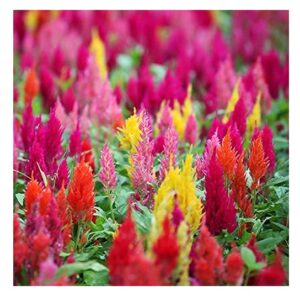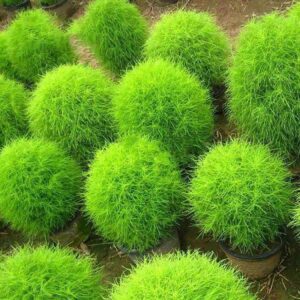
Are you ready to add a splash of vibrant color and attract pollinators to your garden? Salvia flowers are the perfect choice! With their striking blooms and easy-growing nature, salvias are sure to captivate the hearts of all who behold them. Whether you’re a seasoned gardener or just starting out, this guide will help you grow salvia flower seeds successfully and enjoy a garden filled with beauty and charm.
Selecting the Seeds
Start your salvia-growing journey by selecting the right seeds. Salvia flowers come in a variety of colors, including shades of blue, purple, red, and white. Consider the color scheme of your garden and choose seeds that will complement your existing plants or create a stunning contrast. Look for high-quality seeds from reputable suppliers to ensure healthy and vigorous plants.

Preparing the Soil
Salvia flowers thrive in well-drained soil with plenty of sunlight. Prepare your planting area by removing any weeds and loosening the soil to a depth of about 6-8 inches. Incorporate organic matter such as compost or aged manure to improve soil fertility and texture. Salvia plants prefer slightly alkaline soil with a pH of around 6.0-7.0. Amend the soil if necessary to create the optimal growing conditions.
Planting the Seeds
Once the soil is prepared, it’s time to plant your salvia seeds. Sow the seeds directly into the soil at a depth of about ¼ inch. Space the seeds evenly apart, allowing about 12-18 inches between each seedling to give them room to grow. Gently press the seeds into the soil and water the area lightly to settle them in place. Keep the soil consistently moist until the seeds germinate and seedlings emerge.

Providing Care and Maintenance
Salvia flowers are relatively low-maintenance but benefit from regular care to thrive. Water the plants regularly, especially during dry periods, but avoid overwatering as this can lead to root rot. Mulch around the base of the plants to retain moisture and suppress weeds. Fertilize the salvias lightly with a balanced fertilizer once or twice during the growing season to promote healthy growth and abundant flowering.
Protecting Against Pests and Diseases

While salvia flowers are generally resistant to pests and diseases, they can sometimes encounter problems such as aphids, spider mites, and powdery mildew. Monitor the plants regularly for signs of pest infestation or disease, and take appropriate action to address any issues. Use insecticidal soap or neem oil to control aphids and other pests, and remove affected leaves or plants to prevent the spread of disease.
Harvesting and Enjoying Your Blooms
As your salvia plants mature, you’ll be rewarded with a profusion of colorful blooms that attract bees, butterflies, and hummingbirds to your garden. Harvest flowers regularly to enjoy them in floral arrangements or simply admire their beauty in the garden. Salvia flowers are also drought-tolerant and make excellent additions to xeriscapes and water-wise gardens, adding color and interest with minimal maintenance.

Conclusion
Growing salvia flower seeds is a delightful and rewarding experience that brings beauty and joy to any garden. By following the steps outlined in this guide and providing care and attention to your plants, you can enjoy a garden filled with vibrant salvia blooms that uplift the spirit and attract beneficial pollinators. Whether you’re planting salvias in flower beds, borders, or containers, these stunning flowers are sure to bring smiles and happiness to all who encounter them. So roll up your sleeves, dig in the dirt, and watch as your salvia garden flourishes and thrives. Happy gardening!
Hudgle Salvia Flower Seeds Mixed Color Ornamental Plant Flower Seed for Home Garden Terrace Apartments Balcony Pack of 20
About this item
- Ornamental salvias are used for massing, borders, containers, accents, and cut flowers.
- Best for garden or terrace gardening
- They are extremely attractive to hummingbirds and butterflies.
Read More… How to Successfully Grow Coreopsis Flower Seeds 2024



